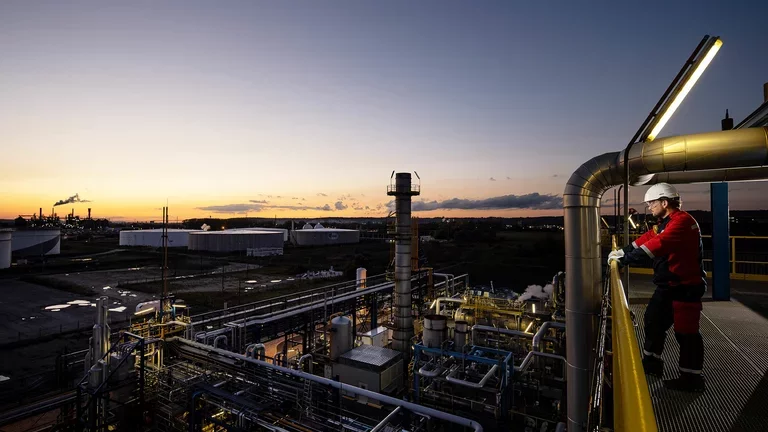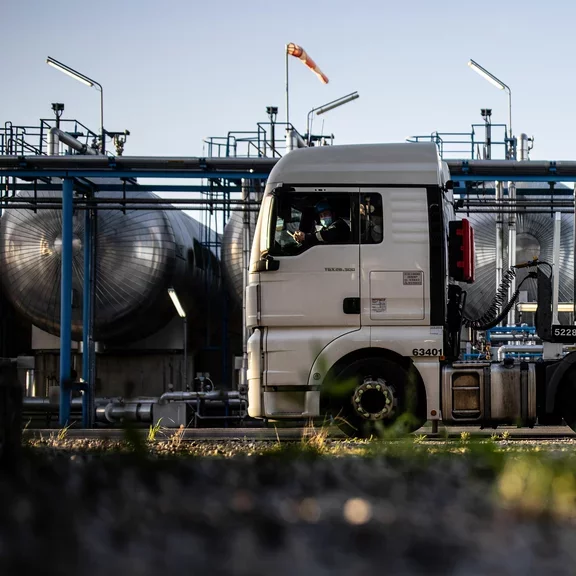Air Liquide Normand’Hy: boosting an industrial region through mass renewable hydrogen production
Published on February 01, 2022

Port-Jérôme and the Seine estuary. This industrial hub in the Seine-Maritime department (France) has fully embraced the energy transition. Numerous initiatives are springing up and the brand-new Air Liquide Normand’Hy project is part of this movement. Major changes are afoot, with the commissioning, from 2025, of a PEM (Proton Exchange Membrane) electrolyzer with a minimum capacity of 200 megawatts. The ultimate ambition is to create the first low-carbon hydrogen network in the world. Find out more!
Large-scale production for large-scale decarbonization
A PEM (Proton Exchange Membrane) electrolyzer uses well-known technology, which basically involves separating the water molecule (H2O) using electricity generated from a renewable source. This separation of the water molecule releases the hydrogen molecule.
Producing a large quantity at an acceptable cost is not so easy, however. But this is the feat that has been achieved by Air Liquide in Canada, with the largest PEM electrolyzer in operation in the world, at 20 megawatts, inaugurated in January 2021. And the capacity of the future project in Normandy will be more than 200 megawatts – enough to meet the very significant needs of refiner customers. As Virginie Carolo-Lutrot rightly points out, "The decarbonization of industry necessarily requires mass production of low-carbon hydrogen."
Now let’s turn to carbon emissions. With this project, from 2025 Air Liquide Normand’Hy will avoid 250,000 tons of annual CO2 emissions. This certainly represents a real change of scale and will radically transform the region.
Supplying renewable hydrogen to heavy transport operators
Regions set their sights on renewable, low-carbon hydrogen
"The employees who work here, for refiners or petrochemical companies, are firstly citizens," emphasises Erwan Keromest. "Our employees are very aware of the issue of decarbonization and they support everything we are doing to reduce carbon emissions. Young employees in particular are increasingly aware. They are joining companies like TotalEnergies to contribute to this change." In fact, a minor revolution is under way in the Seine estuary. "What I observe," says Erwan Keromest, "is that the other industrial companies which gravitate around our large groups are also very interested in this initiative and would like to join the project. All industrial companies from Rouen to Le Havre want to reduce the Seine valley’s carbon footprint." Virginie Carolo-Lutrot agrees. "This project is a foundation on which to build the future," she says. The local authority leader takes a far-sighted view and sees the industrial companies present in her region from a global perspective, encompassing information about the activities at the Port-Jérôme site, school and university education, vocational training, housing, social amenities (nurseries, etc.). Carbon-free industry can really develop the attractiveness of a region – which Air Liquide is contributing to.
Focus on the national strategy for the development of carbon-free hydrogen in France
This Hydrogen Plan, launched in 2020 and allocated more than €7 bn in funding, focuses particularly on the decarbonization of industry through the creation of a French electrolysis sector and the development of heavy mobility using carbon-free hydrogen. It aims to avoid the emission of 6 million tons of CO2 by 2030 and, in the longer term, to reduce industrial emissions by 81% by 2050 compared with 2015.

